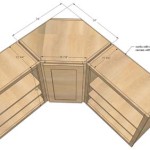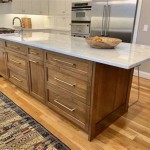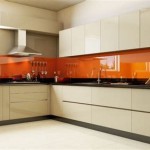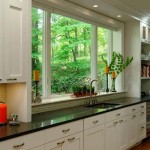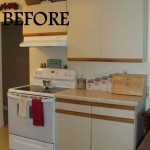Antique Oak Kitchen Cabinets: A Timeless Investment
Antique oak kitchen cabinets represent more than just functional storage solutions; they are tangible pieces of history, imbued with the craftsmanship, design sensibilities, and material quality of bygone eras. These cabinets, often dating back to the late 19th and early 20th centuries, possess a unique charm and character that modern alternatives struggle to replicate. Their inherent durability, the beauty of aged oak, and the stories they carry with them make them a sought-after addition to both traditional and contemporary homes.
The term "antique" is generally defined as an item that is at least 100 years old. Therefore, oak kitchen cabinets built before the 1920s typically qualify as antiques. However, the value and desirability of these cabinets are influenced by several factors, including their condition, style, manufacturer (if known), and provenance. Understanding these factors is essential for anyone considering acquiring or restoring antique oak kitchen cabinets.
Oak, as a material choice for kitchen cabinets, was popular due to its strength, availability, and affordability. Different species of oak, such as red oak and white oak, were used, each with its own distinct grain pattern and characteristics. The quarter-sawn method, where the oak log is cut at a radial angle, was particularly favored for cabinet making because it produced a more stable and visually appealing wood with distinctive ray flecks. This cutting technique is often a hallmark of high-quality antique oak cabinets.
The style of antique oak kitchen cabinets varies depending on the period in which they were made. Early examples might exhibit simpler, more utilitarian designs, while later iterations from the Victorian or Edwardian eras could feature elaborate carvings, ornate hardware, and decorative embellishments. Styles such as Arts and Crafts, Mission, and even early Art Deco can be found represented in antique oak kitchen cabinets.
Key Characteristics of Antique Oak Kitchen Cabinets
Several key features distinguish antique oak kitchen cabinets from their modern counterparts. These characteristics are indicative of the construction techniques, materials, and design philosophies prevalent during the periods in which they were manufactured. Recognizing these features can aid in identifying and appreciating the authentic nature of an antique piece.
One notable characteristic is the construction method. Antique oak cabinets are typically constructed using solid wood with mortise and tenon joints, dovetail joints, and other time-tested techniques. These joints are incredibly strong and durable, contributing to the longevity of the cabinets. Modern cabinets often rely on less robust construction methods, such as particleboard or MDF with staples or screws, which are more prone to damage and failure over time.
The hardware used on antique oak cabinets is another defining feature. Original hardware, such as hinges, pulls, and knobs, is often made of brass, iron, or other durable metals. These pieces frequently exhibit unique designs and patinas that cannot be easily replicated. The presence of original hardware can significantly enhance the value and authenticity of an antique cabinet. Replacing original hardware with modern reproductions can diminish the cabinet's historical significance.
The finish and patina of the oak wood itself offer valuable clues about a cabinet's age and history. Antique oak cabinets often have a rich, warm patina that has developed over decades of use and exposure to the elements. The finish may show signs of wear, such as scratches, dents, and discoloration, which are considered part of the cabinet's character and story. While some restoration efforts may involve refinishing, preserving the original patina is often preferred by collectors and enthusiasts.
Factors Influencing the Value of Antique Oak Kitchen Cabinets
Determining the value of antique oak kitchen cabinets involves considering several factors. These factors include the cabinet's condition, originality, rarity, style, and historical significance. A thorough assessment of these elements is crucial for both buyers and sellers to arrive at a fair and informed price.
Condition is a paramount factor. Cabinets in excellent condition, with minimal damage and original finishes, command higher prices. However, minor imperfections, such as small scratches or dents, are often considered acceptable and may even add to the cabinet's charm. Significant damage, such as water damage, rot, or missing components, can significantly reduce the value of the cabinet. Restoration can improve the condition of a cabinet, but it is important to use appropriate techniques and materials to avoid compromising its historical integrity.
Originality is equally important. Cabinets that retain their original hardware, finishes, and internal components are generally more valuable than those that have been extensively altered or modified. The presence of original labels or markings from the manufacturer can also increase the value of a cabinet. Collectors and enthusiasts often prize originality as it provides a more authentic representation of the cabinet's history and design.
Rarity also plays a significant role in determining value. Cabinets from well-known manufacturers or those with unique designs are often more sought after by collectors. Limited production runs or cabinets with documented historical significance can command premium prices. Researching the history and provenance of a cabinet can help to establish its rarity and potential value.
Restoring and Maintaining Antique Oak Kitchen Cabinets
Restoring antique oak kitchen cabinets requires a delicate balance between preserving their historical integrity and improving their functionality. It is essential to approach restoration projects with care and expertise to avoid damaging the cabinets or diminishing their value. Proper maintenance is also crucial for ensuring the longevity of these valuable pieces.
Before undertaking any restoration work, it is important to thoroughly assess the condition of the cabinets and identify any areas that require attention. This assessment should include examining the structural integrity of the cabinets, identifying any damage to the wood, and evaluating the condition of the hardware and finish. It is often advisable to consult with a professional restorer who specializes in antique furniture to obtain expert advice and guidance.
Cleaning antique oak cabinets should be done with gentle, non-abrasive cleaners to avoid damaging the finish. A soft cloth dampened with a mild soap and water solution is often sufficient for removing dirt and grime. Avoid using harsh chemicals or abrasive cleaners, as these can strip the finish or scratch the wood. After cleaning, the cabinets should be thoroughly dried to prevent water damage.
Refinishing antique oak cabinets is a more involved process that should be undertaken with caution. While refinishing can improve the appearance of cabinets with damaged or worn finishes, it can also diminish their historical value if not done properly. If refinishing is necessary, it is important to use appropriate techniques and materials that are compatible with the original finish. Stripping the old finish, sanding the wood, and applying a new finish should be done carefully and meticulously to avoid damaging the underlying wood.
Maintaining antique oak kitchen cabinets involves regular cleaning, dusting, and polishing. Applying a high-quality furniture polish can help to protect the finish and enhance its luster. It is also important to protect the cabinets from excessive moisture and humidity, as these can cause warping or damage to the wood. Using coasters and placemats can help to prevent water rings and stains on the cabinet surfaces.
Antique oak kitchen cabinets represent a significant investment, both financially and aesthetically. Their timeless appeal, inherent durability, and historical significance make them a valuable addition to any home. By understanding the key characteristics, factors influencing value, and proper restoration and maintenance techniques, owners can ensure that these beautiful pieces of history are enjoyed for generations to come.

Oak Kitchen Cabinet 19th Century Bei Pamono Kaufen

Kitchen Cabinet Pine Golden Classics

Antique Kitchen Cabinet Golden Classics

Antique Oak Kitchen Cupboard Cabinet With Drawers Top Glass Doors Long Valley Traders

Antique Oak Kitchen Decarle Cabinetry

Antique Oak Kitchen Cabinets 1920 S Vintage Ers Mastercraft Cabinet Wi Farmhouse Design

Reclaimed Oak Lumber Antique Finish Kitchen Cabinets Rustic

Antique Dark Oak Kitchen Cabinet 2 Piece Hoosier Style By Marysville Co

Antique Dry Sink Cupboard Wood Cabinet Kitchen Oak

Antique Oak Kitchen Cabinets Timbers And Ceiling Salmon Idaho Photoset 101
Related Posts



